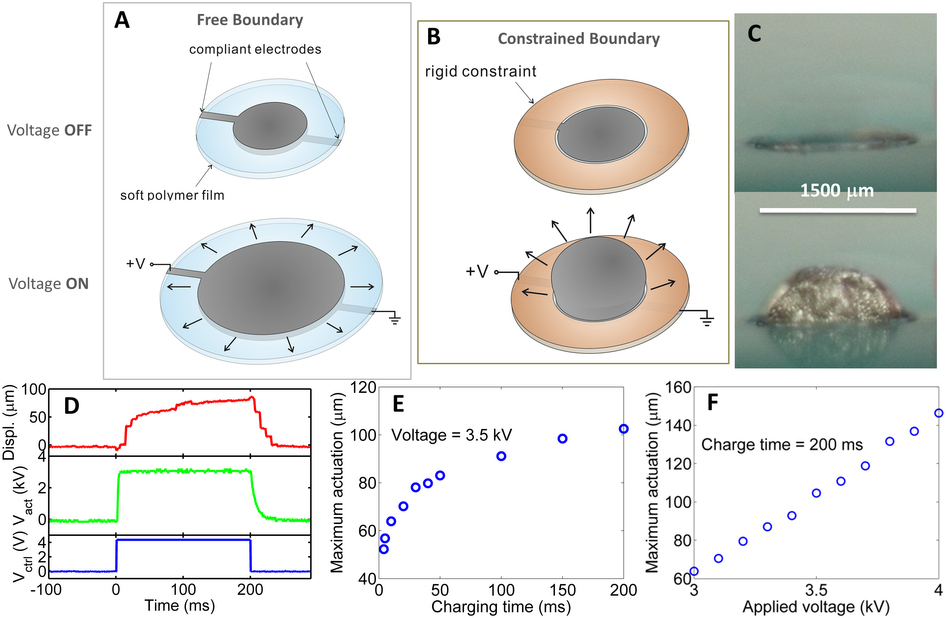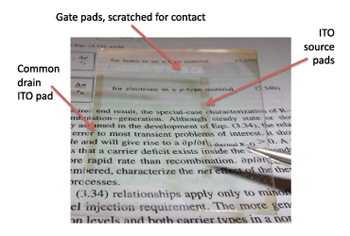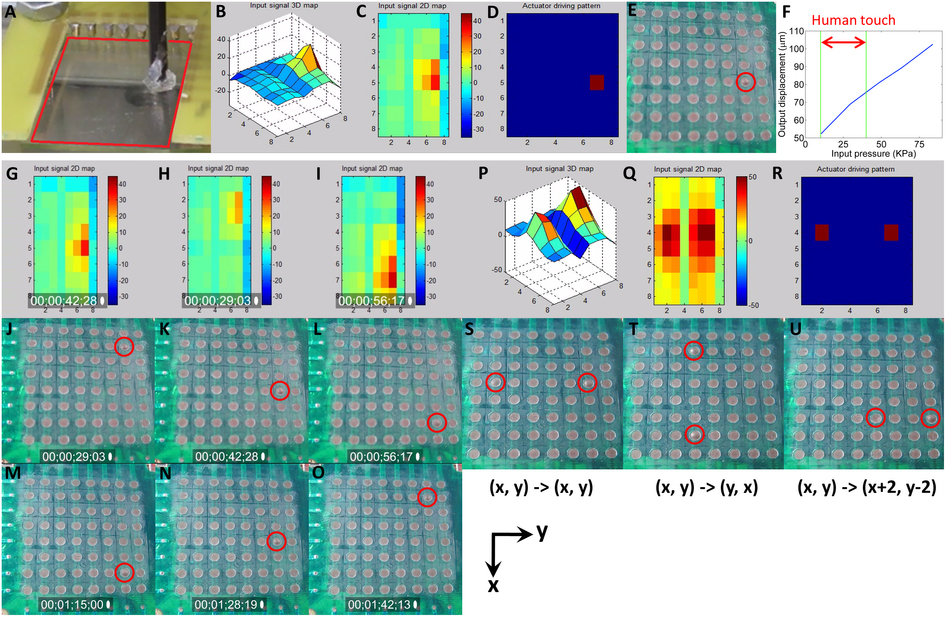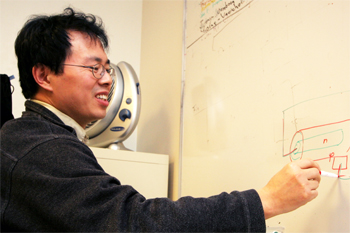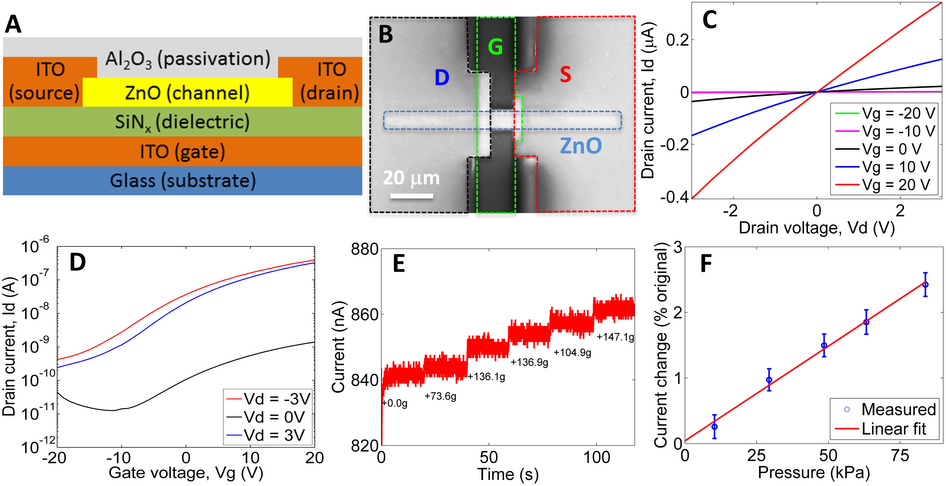Touch Goes Digital
After Touch Screens, Researchers Demonstrate Electronic Recording and Replay of Human Touch
San Diego, Sept. 4, 2013 -- Researchers at the University of California, San Diego report a breakthrough in technology that could pave the way for digital systems to record, store, edit and replay information in a dimension that goes beyond what we can see or hear: touch.
|
In addition to uses in health and medicine, the communication of touch signals could have far-reaching implications for education, social networking, e-commerce, robotics, gaming, and military applications, among others. The sensors and sensor arrays reported in the paper are also fully transparent (see optical image of transparent ZnO TFT sensor array, below), which makes it particularly interesting for touch-screen applications in mobile devices.
|
Two authors of this article, Siarhei Vishniakou of UCSD and Paul Brochu from UCLA, received the Qualcomm Innovation Fellowship (QInF) in 2011 for this research.
In addition to professors Wang and Nguyen, other researchers on the project affiliated with the Qualcomm Institute at UC San Diego include recent Ph.D., Ke Sun, and Namseok Park, recipients of the institute’s Calit2 Strategic Research Opportunities, or CSRO, Graduate Fellowships in 2010 and in 2012, respectively.
“Our sense of touch plays a significant role in our daily lives, particularly in personal interaction, learning and child development, and that is especially true for the development of preemies,” said Nguyen, another senior author of this Scientific Reports paper. “We were approached by colleagues in the UC San Diego School of Medicine’s neonatology group to see if there was a way to record a session of a mother holding the baby, which could be replayed at a different time in an incubator.”
|
One of the critical challenges in developing touch systems is that the sensation is not one thing. It can involve the feeling of physical contact, force or pressure, hot and cold, texture and deformation, moisture or dryness, and pain or itching. “It makes it very difficult to fully record and reproduce the sense of touch,” said Wang.
|
Digital replay, editing and manipulation of recorded touch events were demonstrated at various spatial and temporal resolutions. The researchers used an 8 × 8 active-matrix ZnO pressure sensor array, a data acquisition and processing system (sensor array reader circuit, computer, and actuator array driver circuit), and a semi-rigid 8 × 8 polymer diaphragm actuator array (click here to see video of the experiments).
The ability to digitize the touch contact enables direct remote transfer of touch information, long-term memory storage, and replay at a later time. “In addition, with the ability to reproduce and change the feeling of touch with both temporal and spatial resolutions make it possible to produce synthesized touch,” said UC San Diego’s Wang. “It could create experiences that do not exist in nature, as we have done with computer-generated imagery and synthesized music.”
|
*Tactile Feedback Display with Spatial and Temporal Resolutions, by Siarhei Vishniakou, Brian W. Lewis, Xiaofan Niu, Alireza Kargar, Ke Sun, Michael Kalajian, Namseok Park, Muchuan Yang, Yi Jing, Paul Brochu, Zhelin Sun, Chun Li, Truong Nguyen, Qibing Pei, and Deli Wang, Nature Scientific Reports, Issue 3, Number 2521, pp. 1-6, doi:10.1038/srep02521 , published Aug. 28, 2013.
Related Links
Scientific Reports Article
Wang Lab@UCSD
Electrical and Computer Engineering
Jacobs School of Engineering
Qualcomm Institute, Calit2
Media Contacts
Doug Ramsey, 858-822-5825, dramsey@ucsd.edu

